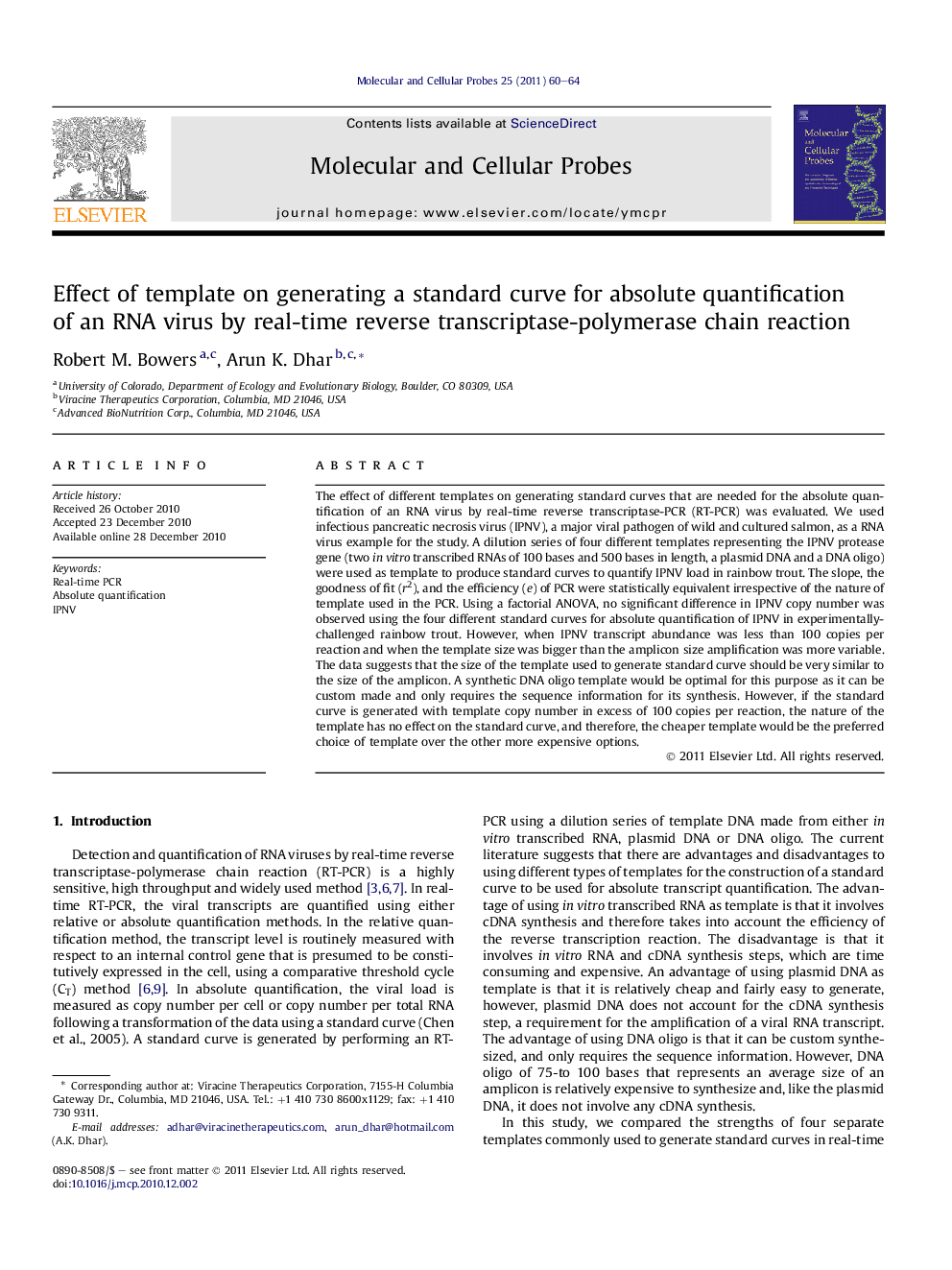| Article ID | Journal | Published Year | Pages | File Type |
|---|---|---|---|---|
| 2199807 | Molecular and Cellular Probes | 2011 | 5 Pages |
The effect of different templates on generating standard curves that are needed for the absolute quantification of an RNA virus by real-time reverse transcriptase-PCR (RT-PCR) was evaluated. We used infectious pancreatic necrosis virus (IPNV), a major viral pathogen of wild and cultured salmon, as a RNA virus example for the study. A dilution series of four different templates representing the IPNV protease gene (two in vitro transcribed RNAs of 100 bases and 500 bases in length, a plasmid DNA and a DNA oligo) were used as template to produce standard curves to quantify IPNV load in rainbow trout. The slope, the goodness of fit (r2), and the efficiency (e) of PCR were statistically equivalent irrespective of the nature of template used in the PCR. Using a factorial ANOVA, no significant difference in IPNV copy number was observed using the four different standard curves for absolute quantification of IPNV in experimentally-challenged rainbow trout. However, when IPNV transcript abundance was less than 100 copies per reaction and when the template size was bigger than the amplicon size amplification was more variable. The data suggests that the size of the template used to generate standard curve should be very similar to the size of the amplicon. A synthetic DNA oligo template would be optimal for this purpose as it can be custom made and only requires the sequence information for its synthesis. However, if the standard curve is generated with template copy number in excess of 100 copies per reaction, the nature of the template has no effect on the standard curve, and therefore, the cheaper template would be the preferred choice of template over the other more expensive options.
